Natural Solutions to Things That Bug You (51 page)
Read Natural Solutions to Things That Bug You Online
Authors: Myles Bader

Sweet potato weevil is the most serious pest of sweet potato, not only in the United States, but worldwide. It causes damage in the field, in storage, and is of quarantine significance. It is inherently of interest to entomologists due to its strikingly colorful appearance and extremely long rostrum (beak).
Sweet potato weevil was first found in Louisiana in 1875, and then in Florida in 1878 and Texas in 1890, probably entering by way of Cuba. It is now found throughout the coastal plain of the Southeast from North Carolina to Texas. It also is found in Hawaii and Puerto Rico and widely around the world in tropical regions.
A complete life cycle only requires one to two months, with 35 to 40 days being common during the summer months.
The generations are indistinct, and the number of generations annually is estimated to be five in Texas, and at least eight in Louisiana. Adults never undergo a period of diapause in the winter, but will seek shelter and remain inactive until the weather is favorable. All stages can be found throughout the year if suitable food material is available.
Eggs are deposited in small cavities created by the female with her mouthparts in the sweet potato root or stem.
The female deposits a single egg at a time then seals the egg within the oviposition cavity with a plug of fecal material, which makes it difficult to observe the egg. Most eggs tend to be deposited near the juncture of the stem and root of the sweet potato.
Sometimes the female will crawl down cracks in the soil to access tubers for oviposition, in preference to depositing eggs in stem tissue. Duration of the egg stage varies from about five to six days during the summer to about 11 to 12 days during colder weather. Females apparently produce two to four eggs per day or 75 to 90 eggs during their life span of about 30 days.
When the egg hatches the larva will burrows into the tuber or stem of the plant. Those hatching in the stem usually burrow down into the tuber. The larva is legless and white in color. The mature larva creates a small pupae chamber in the tuber or stem. The pupa is similar to the adult in appearance, although the head and elytra are bent ventrally. The pupa measures about 6.5 mm in length.
Normally, the adult emerges from the pupation site by chewing a hole through the exterior of the plant tissue, but sometimes it remains for a considerable period and feeds within the tuber. The adult is striking in form and color and has a thin body, legs, and head. The head is black, the antennae, thorax and legs orange to reddish brown, and the abdomen and elytra are metallic blue. The snout is slightly curved and about as long as the thorax; the antennae are attached at about the midpoint on the snout.
The beetle appearance is smooth and shiny, but close examination shows a layer of short hairs. The adult measures 5.5 to 8.0 mm in length. Adults are secretive and often feed on the lower surface of leaves, and are not readily noticed. The adult is quick to feign death if disturbed. Adults can fly, but seem to do so rarely and in short, low flights

GETTING THEIR GOAT
Goatweed is a natural enemy of the weevils. You can powder the plant and place the powder in areas that you are having a problem in. You can also plant goatweed to protect plants from a number of pests.
FEED THEM THORN APPLES (Jimson Weed)
This is a very effective method of controlling seed weevils. Just dry the leaves and stems of the plant and use it as a dust to dust the crops that are affected. This plant can also be made into a spray by crushing a handful of the leaves in 4 cups of water and add 3 drops of liquid soap, strain and spray.
This plant is poisonous to humans and animals and should be handled accordingly.
PLAY DROPSY WITH THEM
The arbovitae weevil is a small black beetle covered with metallic green scales and emerges from the soil in early May. They like red and white cedar roots and the adults will eat foliage of adjacent plants as well. The best way to remove the beetles is to place a sheet under the plant or tree and shake for all your worth. They readily fall off and can be captured and disposed of with extreme prejudice.
REFRIGERATION WORKS
A number of large companies that sell and store grain in the United States found that they do not have any problems with grain beetles if they store the grain products at 40
F. Most refrigerators maintain this temperature. Most companies now recommend that you store your grains in the refrigerator as soon as you bring them home from the store.
USE A COOKIE SHEET
If you are not sure if a problem exists in your flour or grain product, just spread out the product on a cookie sheet and place it in a 135
F oven for 30 minutes. Check the oven with a thermometer since if you have a pilot light the temperature may be around the degrees you need without turning on the oven.
PEA WEEVILS PREFER THE WEST COAST
General Information:
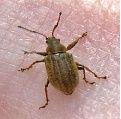 The pea weevil is a coast-to-coast pest, however, they seem to prefer the states of Utah, Washington, Oregon and California the best. The adult beetle is a brownish color with scattered white and gray markings. It loves to feast on pea blossoms and lays their eggs on young pods.
The pea weevil is a coast-to-coast pest, however, they seem to prefer the states of Utah, Washington, Oregon and California the best. The adult beetle is a brownish color with scattered white and gray markings. It loves to feast on pea blossoms and lays their eggs on young pods.
The worms then burrow through the pod and into the pea flesh for their meal. Most remedies for weevils will work on this pest.
 If you are going to use peas for seed it would be best to heat them to 125
If you are going to use peas for seed it would be best to heat them to 125
F for about 5-6 hours to be sure there are no eggs on the peas. This will not damage the pea for seed purposes. The weevils will settle when in flight as soon as they get the scent from pea blossoms and the edges of the fields are more susceptible to damage than the rest of the field.
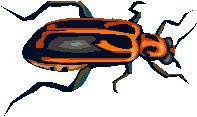
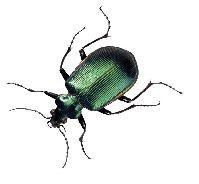
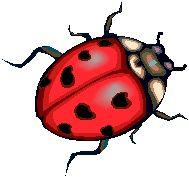
CHAPTER 9
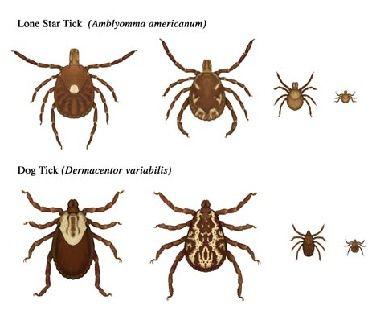
TICKS
TICKS THAT CAUSE DISEASE
American dog tick
These ticks are common on the east coast but can be found in most parts of the country. They are brown and have silvery-gray marks on their backs.
It normally prefers dogs but if none are available it will go to a human host. This tick can transmit tularemia and Rocky Mountain spotted fever and can cause a special tick paralysis in susceptible dogs and people.